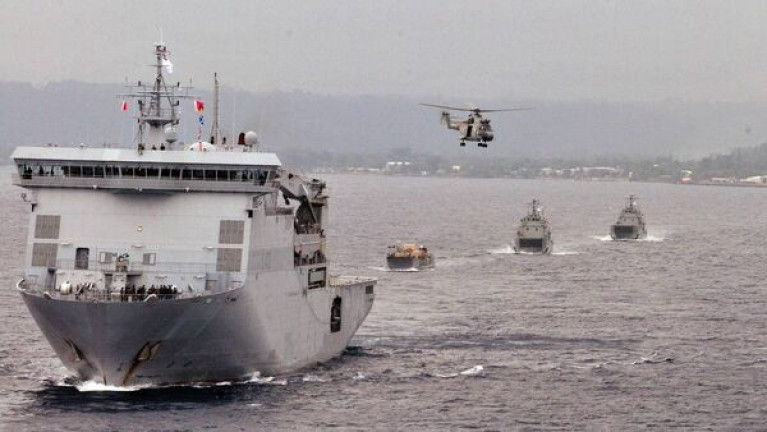Displaying items by tag: Multi Role Vessel (MRV)
New Multi-Role Vessel (MRV) for Naval Service As Department of Defence Targets €200m
The intention to purchase a new Multi Role Vessel (MRV) for the Naval Service has been confirmed by the Department of Defence.
This could see the vessel be used as a hospital ship and capable of carrying troops and helicopters for amphibious in addition airborne landings.
A spokeswoman for the department said planning is "underway on this project".
It is envisaged that the MRV (as Afloat reported in 2018) will replace the ageing LÉ Eithne as the Naval Service flagship, and could cost up to €200m.
The new ship is likely to be designed to allow it the capability to carry out numerous different types of missions, not just sea fishery patrols.
Military sources have indicated that it could be used to provide humanitarian aid in times of emergency in Ireland and in other countries where conflicts or climate disaster threaten civilian populations.
It could also be used by gardaí, customs, or the coastguard, where required.
The MRV project is being managed by a civil-military project team and work is ongoing on preparing detailed specification requirements for the ship.
For further reading the Irish Examiner reports.
Manx Seasonal Visitor to Dublin Port
Following this mornings Irish route sailing, she resumed on her regular Douglas-Heysham route and she also serves Douglas-Birkenhead (Liverpool) during the winter months.
During the summer Dublin-Douglas sailings are served by fast-ferry catamaran Manannan (1998/5,743grt). The 96m InCAT built in Hobart,Tasmania had also operated Douglas-Belfast high-season crossings. Her roster is now confined to a Douglas-Liverpool sailing schedule.
Ben-My-Chree (photo) is Manx for 'Girl of my heart' and her island owners commissioned the 12,504grt ro-pax from Dutch shipbuilders Van de Giessen-de Noord. The 125m ferry was launched in 1998 and she can accommodate 630 passengers,275 vehicles and 1,235 freight lane-metres.
This particular ro-pax design has also been built for Channel Islands operator Commodore Ferries with their Commodore Clipper and a Scandinavian ferry operator. In addition another Dutch shipbuilder, Merwede built a multi-support vessel (MRV) derived from the design of Ben-My-Chree for the Royal New Zealand Navy when they commissioned HMNZS Canterbury (L421). Click for similar port-side photo view to compare differences.
Incidentally the Manannan prior to entering service last year for the IOMSPCo. was for five years chartered initially to the United States Navy but transferred to the United States Army Forces. To read more click HERE.

























































